Yield to curiosity and explore the enigmatic presence of Mary Magdalene at the Last Supper, where history and mystery intriguingly converge.
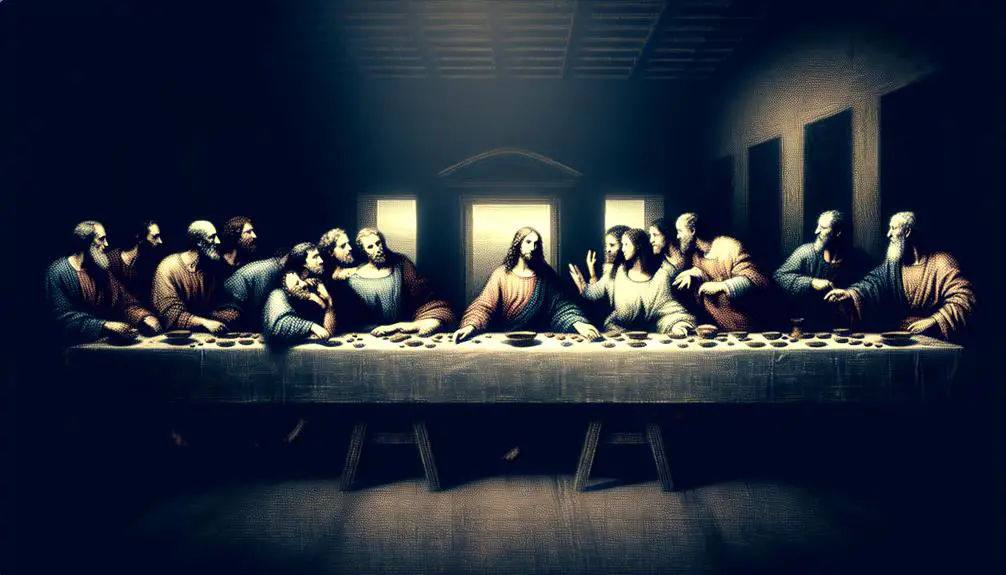
Was Mary Magdalene at the Last Supper in the Bible
Navigating the murky waters of biblical history, you might find yourself questioning the presence of Mary Magdalene at the Last Supper. This enigmatic figure, often shrouded in mystery and speculation, doesn't get a direct mention in the Scriptures during this pivotal moment.
Yet, the debate around her involvement opens a Pandora's box of cultural, historical, and scholarly interpretations that challenge traditional views. As you consider the layers of evidence and argumentation, you'll uncover perspectives that might shift your understanding of one of Christianity's most significant events.
Stay with us as we explore this intriguing question, where ancient texts and modern theories intersect.
Key Takeaways
- The Gospels do not explicitly state Mary Magdalene's presence at the Last Supper.
- Artistic representations, like Da Vinci's Last Supper, blend historical events with creative interpretation.
- Apocryphal texts and feminist theology offer alternative perspectives on her involvement.
- Scholarly debate continues regarding her role due to Gospel discrepancies and historical interpretations.
The Last Supper: An Overview
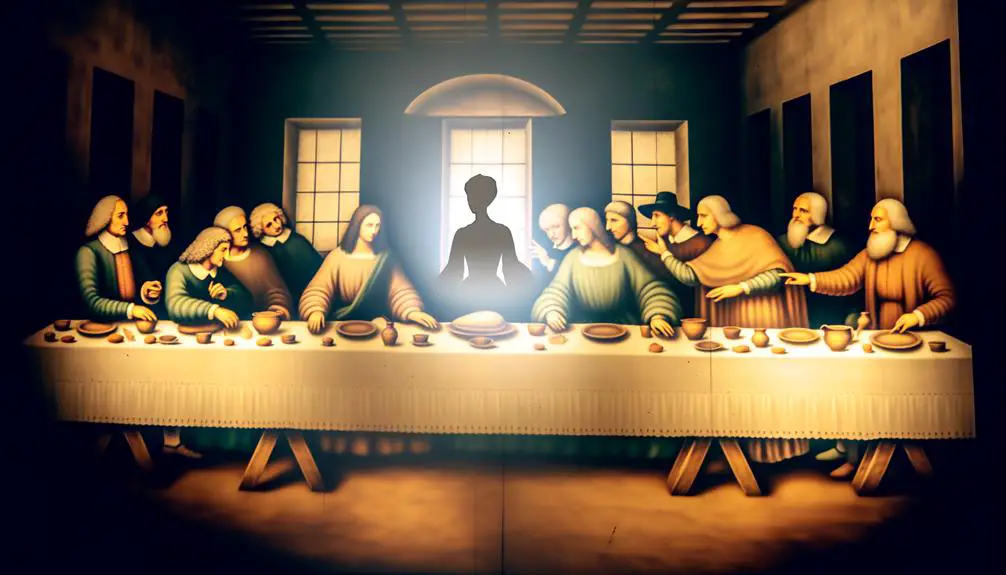
At the heart of Christian tradition, the Last Supper represents Jesus Christ's final meal with his disciples before his crucifixion. This event, deeply embedded in the narrative of the New Testament, isn't just a historical account but a cornerstone of faith that embodies profound theological significance and Apostolic symbolism.
You'll find that the Last Supper is intricately linked with the Jewish Passover, reflecting its significance as a moment of liberation and divine protection. Jesus's choice to have this meal with his disciples during Passover isn't coincidental. It's a deliberate act that connects the liberation of the Israelites from Egypt with the new covenant for the forgiveness of sins through his sacrifice. This parallel draws a direct line from the ancient traditions to the new, where Jesus positions himself as the Paschal Lamb, whose sacrifice would lead to the ultimate deliverance of humanity from sin.
Moreover, the Apostolic symbolism at the Last Supper can't be overlooked. Each disciple's presence signifies the foundation of the Church, with Jesus at its head, instituting the Eucharist and setting the precedent for Christian worship and fellowship. This act of breaking bread and drinking wine, as Jesus commanded, 'in remembrance of me,' is a ritual that has echoed through millennia, defining the essence of Christian communal worship and belief.
Analyzing the Last Supper through these lenses reveals not just a historical event but a profound theological moment that continues to influence Christian doctrine and practice. Its implications are far-reaching, touching on themes of sacrifice, redemption, and the establishment of a new covenant between God and humanity.
Who Was Mary Magdalene?
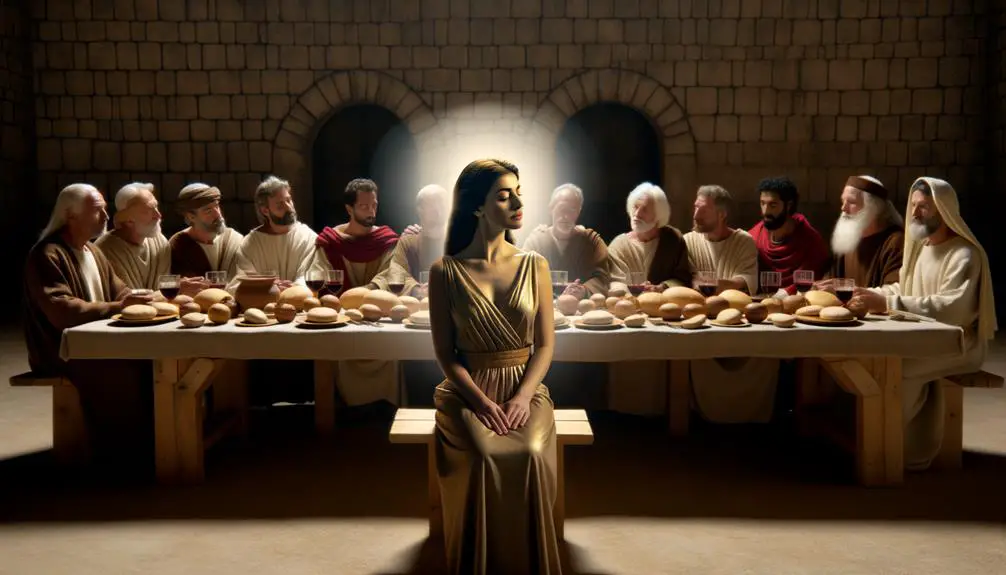
You might wonder who Mary Magdalene truly was beyond the myths and legends.
She wasn't just a disciple of Jesus; her early life and the misconceptions surrounding her play a crucial role in understanding her significance.
Let's explore these aspects to gain a clearer picture of her historical and spiritual impact.
Early Life Insights
Mary Magdalene, often shrouded in mystery and speculation, emerges from historical and biblical accounts as a figure of significant intrigue and importance. Delving into her early life, one must separate Magdalene myths from facts, particularly regarding her family background.
Aspect |
Detail |
|---|---|
Origin |
Magdala, a fishing village |
Socio-economic |
Possibly of higher status |
Misconceptions |
Misidentified as a sinner |
These rows aim to clarify that Mary Magdalene's origins and social standing are often misconstrued, contributing to a complex narrative. Despite the tendency to focus on her later life, understanding her beginnings is crucial for a comprehensive view. Mary's background, free from embellishments, lays a foundation for appreciating her role in biblical events without the shadow of enduring myths.
Disciple of Jesus
Transitioning from her origins, it's crucial to examine her role as a disciple of Jesus, which underscores her significance in biblical narratives. Mary Magdalene's discipleship is pivotal, debunking various Magdalene myths and highlighting her authentic connection to apostolic traditions.
- Witness to Crucifixion and Resurrection: She was present during these critical moments, demonstrating her unwavering commitment as a follower.
- First to Report the Resurrection: Entrusted with the news, she became the apostle to the apostles, reinforcing her key role in early Christian communities.
- Prominent in Apocryphal Texts: Though not canonized, these texts amplify her significance and provide insights into her leadership and teachings, aligning her more closely with apostolic traditions than many realize.
This analysis illuminates Mary Magdalene's undeniable influence and dedication as a disciple of Jesus.
Misconceptions Addressed
Throughout history, numerous misconceptions have clouded understanding of who Mary Magdalene truly was, often overshadowing her critical role in early Christianity. Gospel discrepancies and Apocryphal texts have fueled debates, leading to varied interpretations of her identity and significance.
Some view her as a penitent sinner, a narrative largely unsupported by canonical scriptures, yet popularized by certain early church fathers and medieval art. Others, drawing from Apocryphal texts, see her as a prominent disciple, possessing insight and closeness to Jesus rivaling that of the male apostles.
This divergence in portrayal stems from selective reading and the blending of traditions over centuries. Unraveling these layers requires a critical examination of both canonical and non-canonical sources, aiming to reconcile her historical footprint with theological interpretations.
Biblical Accounts Reviewed
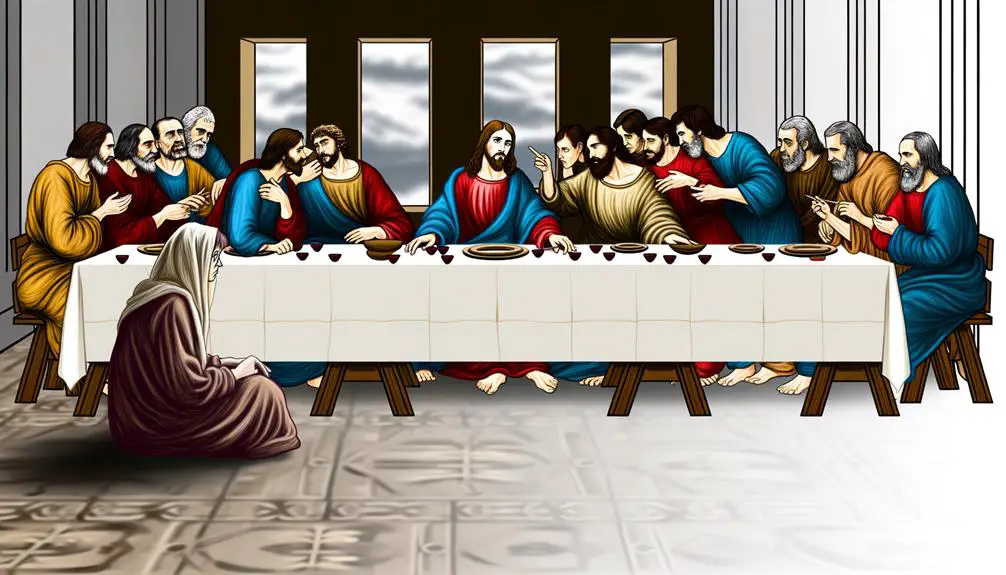
In examining the biblical accounts, it's crucial to assess the portrayal and involvement of Mary Magdalene in the context of the Last Supper with precision and objectivity. This event, deeply embedded in the fabric of Christian tradition, holds layers of spiritual and historical significance. It's where you delve into the Passover significance, reflecting on the liberation from bondage, and explore the apostolic traditions that emerged from this pivotal moment.
As you navigate through the texts, three key observations emerge:
- Scriptural Silence: The Gospels, which serve as primary sources for the Last Supper narratives, don't explicitly mention Mary Magdalene's presence. This absence is noteworthy, considering the detailed descriptions of the apostles and the institution of the Eucharist.
- Contextual Clues: While direct mentions are absent, the involvement of women in Jesus' ministry, including Mary Magdalene, is well documented. They supported Jesus' mission and were present at critical junctures, suggesting a possibility of her presence in broader ministry contexts, though not specified at the Last Supper.
- Theological Implications: The focus of the Last Supper accounts is on the Passover significance and the establishment of apostolic traditions. These narratives emphasize the symbolic actions and words of Jesus, aimed at preparing his followers for the events to follow.
Analyzing Da Vinci's Depiction
You'll find that Da Vinci's portrayal in 'The Last Supper' raises questions about his interpretive choices, particularly concerning the figures' identities. His use of artistic license and the level of historical accuracy he achieves are points of contention among scholars.
Additionally, the gender representation controversy, especially regarding the figure some believe to be Mary Magdalene, underscores the complexity of interpreting this iconic work.
Da Vinci's Interpretive Choices
Da Vinci's depictions in his artwork, particularly the portrayal of Mary Magdalene at the Last Supper, reveal a deliberate choice that challenges traditional interpretations and invites closer analysis. Here's why:
- Color Symbolism: Da Vinci meticulously chose colors to signify traits and moods, subtly hinting at the identities and roles of figures, including the debated presence of Mary Magdalene.
- Restoration Controversies: Over the centuries, restoration efforts have sparked debates about the original appearances and intentions behind the figures, further complicating interpretations.
- Historical and Cultural Context: Understanding the societal norms and artistic conventions of Da Vinci's time is crucial for grasping the significance of his choices.
These elements combine to form a rich tapestry of interpretation, showcasing Da Vinci's mastery and the enduring allure of his works.
Artistic License and Accuracy
Exploring the balance between artistic license and historical accuracy opens new dimensions in understanding Da Vinci's depiction of the Last Supper. You'll find that Da Vinci's masterpiece isn't merely a reflection of historical evidence but also an embodiment of his creative interpretation.
Historical records and biblical texts offer a foundation, yet they leave room for artistic expression. Da Vinci seizes this opportunity, blending fact with his unique vision, which modern interpretations continue to analyze and debate.
His work prompts you to question where the line between historical documentation and artistic innovation lies. This intersection of history and creativity not only enriches the artwork's complexity but also invites you to engage with it on multiple levels, beyond the constraints of traditional historical analysis.
Gender Representation Controversy
Analyzing Da Vinci's Last Supper, a significant controversy emerges over the representation of gender, particularly in the debated identity of the figure sitting to Jesus' right. This debate touches on several critical points:
- Gender roles: The traditional biblical narrative presents the Last Supper as an all-male event. Da Vinci's portrayal introduces questions about the presence and roles of women in biblical narratives.
- Feminist theology: The potential inclusion of Mary Magdalene challenges historical gender dynamics and supports a more inclusive interpretation of religious texts.
- Artistic interpretation: Da Vinci's work invites viewers to reconsider historical and religious narratives, suggesting that gender representation in religious art is both complex and multifaceted.
These points underscore the ongoing dialogue between historical accuracy, gender representation, and the evolving understanding of feminist theology.
Cultural and Historical Context
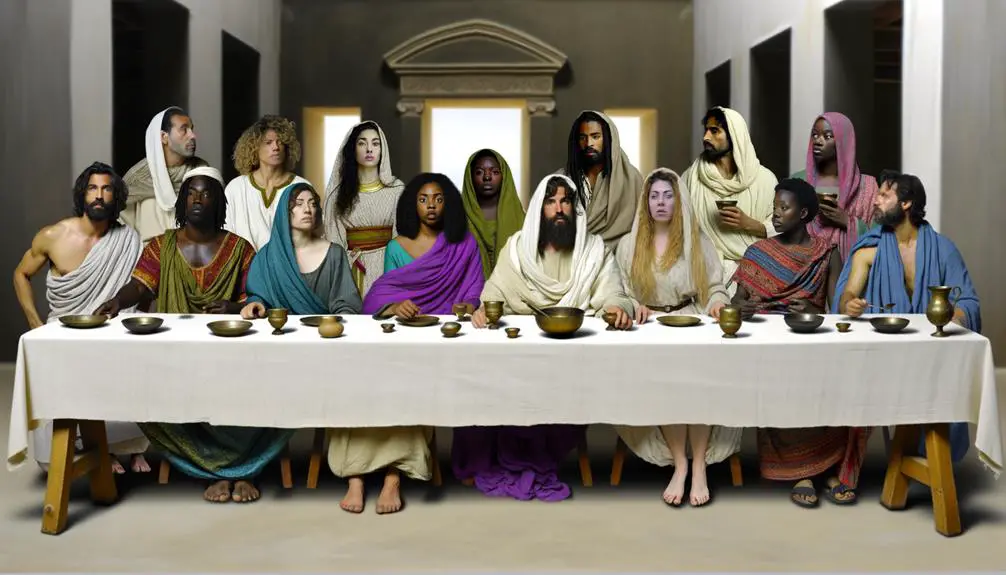
Understanding Mary Magdalene's role at the Last Supper requires a deep dive into the cultural and historical context of the time. At the heart of this exploration lies the intersection of Roman customs and societal roles, which shaped every aspect of daily life in the ancient Near East. You'll find that societal norms were deeply entrenched, and the roles of men and women were strictly defined.
Aspect |
Description |
|---|---|
Roman Customs |
Influence on public and private spheres, including religious practices and societal gatherings. |
Societal Roles |
Defined expectations for men and women, with clear distinctions in public engagement and religious observance. |
Religious Context |
The Last Supper as a Jewish Passover meal, reflecting specific rituals and customs of the time. |
These elements combined to create a setting where the presence and participation of women in religious gatherings, such as the Last Supper, would be viewed through the lens of contemporary norms and expectations. Women's roles were predominantly domestic, and their involvement in public religious life was limited. However, the Gospels present a nuanced picture, highlighting the presence of women in Jesus' ministry in ways that challenge these conventions.
This backdrop is crucial in understanding the discussions and debates surrounding Mary Magdalene's presence at the Last Supper. It wasn't just about who was physically present, but also about the broader implications of such a presence in the face of entrenched cultural norms. Her role, as depicted in various texts, serves as a focal point for examining the intersections of gender, religion, and society in ancient times.
Scholarly Interpretations
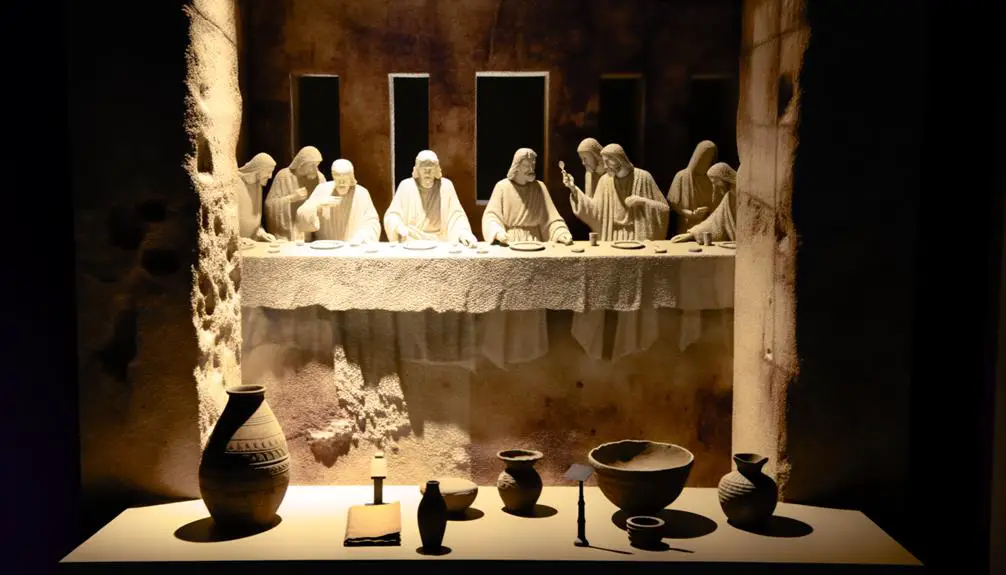
Having examined the cultural and historical context, let's now turn our attention to how scholars interpret Mary Magdalene's role at the Last Supper. Scholarly interpretations vary widely, with most discussions centered around canonical scriptures and Apocryphal Texts, including the Gnostic Gospels.
- Traditional Canonical View: Many scholars adhere to the traditional interpretation based on the canonical gospels of the New Testament, where Mary Magdalene's presence at the Last Supper isn't explicitly mentioned. These scholars argue that the Last Supper was a closely defined event involving Jesus and the Twelve Apostles, underscoring the absence of any direct evidence pointing to Mary Magdalene's attendance.
- Gnostic Gospels and Apocryphal Texts: A different set of scholars turn to the Gnostic Gospels and other Apocryphal Texts for insights. These texts, which weren't included in the canonical Bible, often highlight Mary Magdalene's close relationship with Jesus. The Gospel of Philip, for instance, describes Mary as a companion of Jesus, which some interpret as suggesting her significant role in his life and, by extension, possible presence at key events like the Last Supper. However, these texts are subject to much debate regarding their historical accuracy and authenticity.
- Feminist Theological Perspective: Some scholars, particularly from feminist theological backgrounds, argue for a reevaluation of Mary Magdalene's role. They suggest that the early church's patriarchal structure may have minimized her significance, including her potential presence at the Last Supper.
Alternative Perspectives
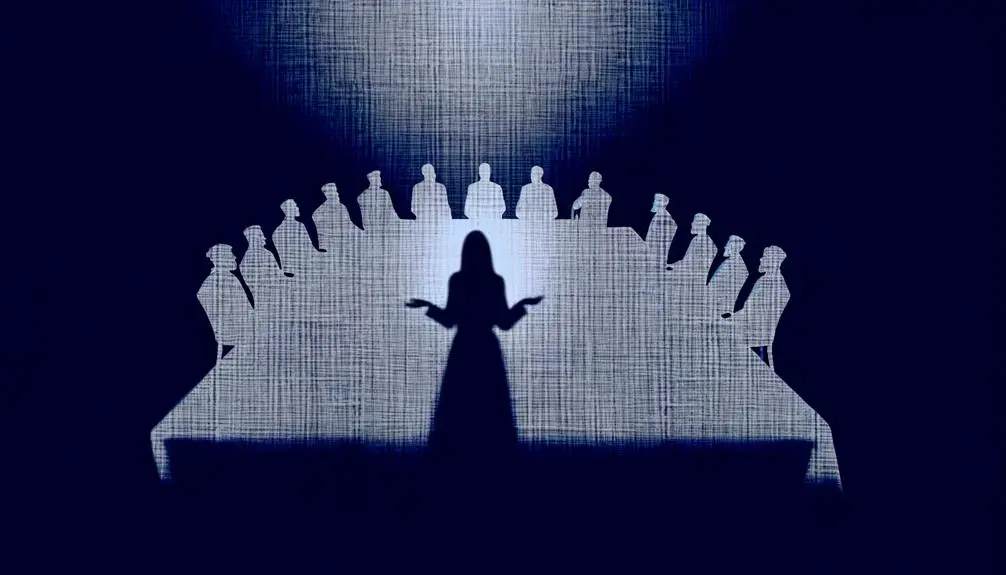
Diving into alternative perspectives, we'll explore theories that challenge traditional views and shed new light on Mary Magdalene's potential involvement in the Last Supper. It's essential to consider the impact of apocryphal texts and feminist theology on our understanding of this historical and religious event.
Apocryphal texts, which aren't included in the canonical Bible, offer intriguing insights. These texts sometimes portray Mary Magdalene in a more prominent role among Jesus' followers, suggesting her closeness to Jesus could have merited her presence at significant events such as the Last Supper. While these documents aren't recognized by all Christian denominations as authoritative, they provide a richer tapestry of early Christian beliefs and practices, challenging us to reconsider the dynamics of Jesus' inner circle.
Feminist theology further complicates the traditional narrative by questioning the historical sidelining of women in religious texts. Advocates argue that the patriarchal context of biblical times and subsequent interpretations have minimized women's roles in sacred stories. By re-examining texts with a critical, feminist lens, scholars suggest that Mary Magdalene's absence from the Last Supper narrative in the canonical gospels doesn't necessarily imply she wasn't present but rather reflects broader societal norms that undervalued women's participation.
These alternative perspectives don't just invite speculation; they encourage a deeper engagement with the texts and contexts of early Christianity. By acknowledging the possible roles of women like Mary Magdalene, we open ourselves to a more inclusive and nuanced understanding of biblical events.
Final Thoughts on the Mystery
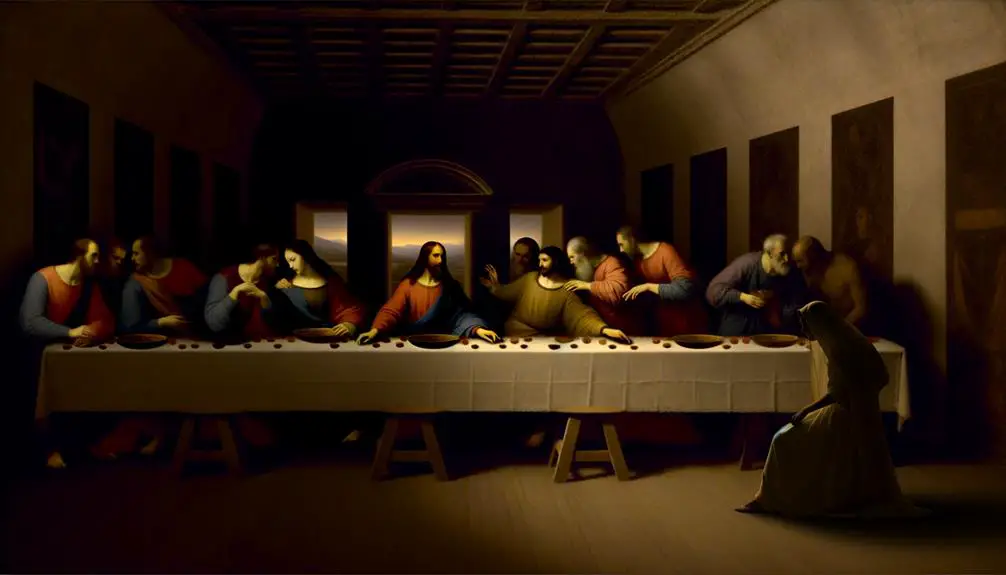
In light of the alternative perspectives explored, it's clear that the mystery surrounding Mary Magdalene's presence at the Last Supper invites further scrutiny and discussion. The nuances of Communion symbolism and Apostolic presence underscore the complexity of this debate. Here's what you need to consider moving forward:
- Communion Symbolism: The Last Supper is a foundational event in Christian theology, symbolizing Jesus' sacrifice. The inclusion, or exclusion, of Mary Magdalene in this event isn't just a matter of historical record but also of theological interpretation. Her presence could imply a broader, more inclusive understanding of those called to be witnesses to Jesus' ministry and sacrifice.
- Apostolic Presence: The traditional depiction of the Last Supper focuses on the Apostolic circle. Expanding this to include Mary Magdalene challenges and enriches our understanding of who was considered a disciple. This isn't about diminishing the role of the Apostles but about recognizing the diverse community that Jesus nurtured.
- Need for Further Scrutiny: The gaps in historical records necessitate a careful analysis of both canonical and non-canonical texts. While the canonical Gospels don't explicitly mention her presence, the role of Mary Magdalene in early Christian texts and traditions suggests a significant involvement in Jesus' ministry that merits further investigation.
Frequently Asked Questions
How Did the Portrayal of Mary Magdalene in Popular Media Influence Public Perception of Her Presence at the Last Supper?
The way Mary Magdalene's depicted in popular media, through cinematic portrayals and artistic interpretations, significantly shapes your perception of her. These representations often blur historical accuracy with creative liberty, leading you to question her actual presence at significant events like the Last Supper.
What Are the Implications of Mary Magdalene's Potential Presence at the Last Supper for Modern Feminist Theological Interpretations?
Imagine if Mary Magdalene was at the Last Supper. This possibility could revolutionize how modern feminist theologians interpret gender roles in religious contexts.
It's not just about her being there; it's the symbolic representation of women in foundational spiritual moments. You're looking at a potential shift in narratives, where women's roles aren't just acknowledged but celebrated.
This analysis digs deep, challenging traditional views and inspiring a more inclusive understanding of spiritual leadership.
Are There Any Recently Discovered Texts or Artifacts That Shed New Light on Mary Magdalene's Role During the Last Supper?
You're looking for fresh insights into Mary Magdalene's role during the Last Supper. Recently, advances in archaeological methods and re-examinations of the Gnostic Gospels have sparked interest.
While these sources haven't definitively placed her at the event, they've enriched our understanding of her significance in early Christian communities.
This nuanced perspective, blending historical techniques and textual analysis, offers a more complex view of her contributions and presence.
How Do Different Christian Denominations Today View the Idea of Mary Magdalene Attending the Last Supper?
You'll find that views on Mary Magdalene's presence at the Last Supper vary widely among Christian denominations today. This divergence largely stems from differences in scriptural evidence interpretation and denominational traditions.
Some traditions emphasize the literal text, which doesn't explicitly mention her, while others consider broader interpretations or extra-biblical texts that suggest her significance in Jesus' ministry.
It's a fascinating illustration of how scriptural interpretation and tradition influence religious beliefs.
Has the Debate Over Mary Magdalene's Presence at the Last Supper Impacted Ecumenical Dialogues or Interfaith Discussions?
Ironically, you'd think a debate from centuries ago wouldn't matter today, but it does.
The discussion over Mary Magdalene's presence at key biblical events has subtly influenced ecumenical policies and interfaith ceremonies.
It's sparked conversations on inclusion and representation within religious dialogues.
Conclusion
In the tapestry of history, Mary Magdalene and the Last Supper weave a complex pattern, shrouded in mystery and illuminated by faith. Scholars dissect scripture and art with surgical precision, yet the question remains, a silhouette against the bright tableau of belief.
Was she there, a quiet observer among the apostles? Or is her presence a modern projection, a shadow cast backward in time? As the debate continues, the truth lies suspended, a note in an ancient melody still being deciphered.


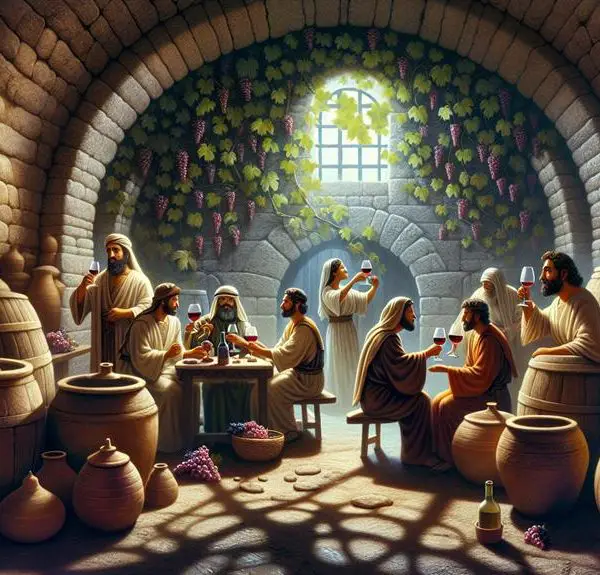
Sign up